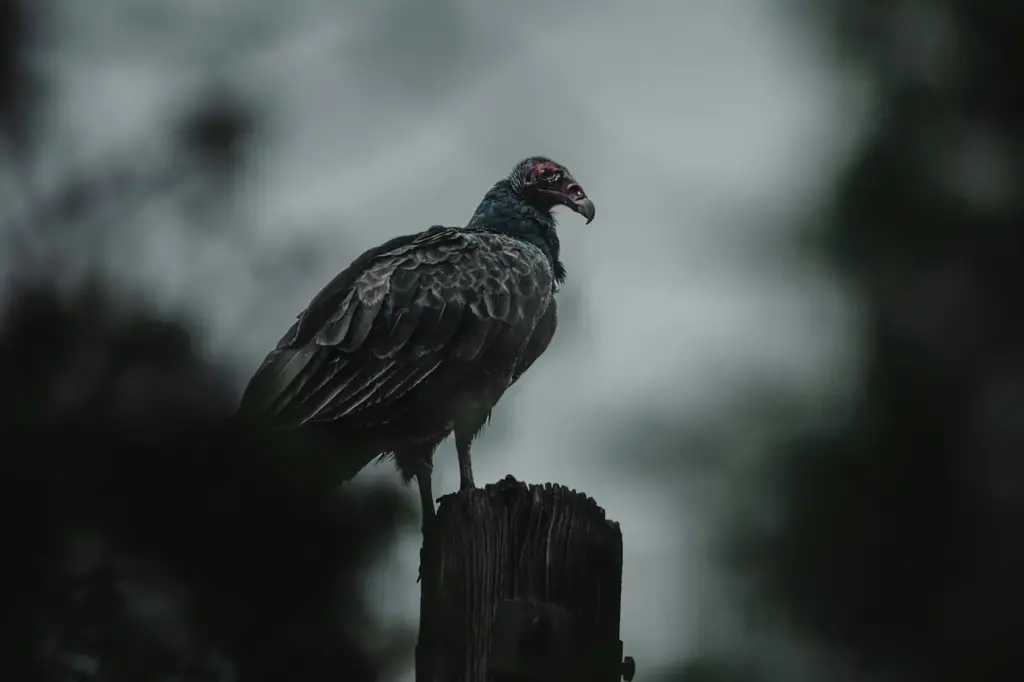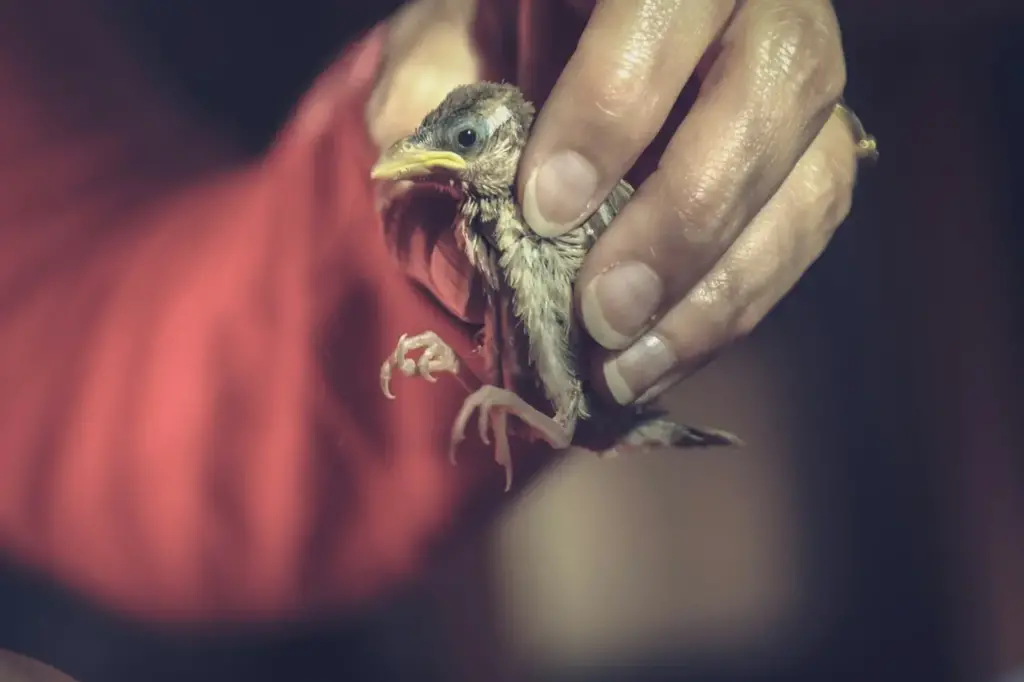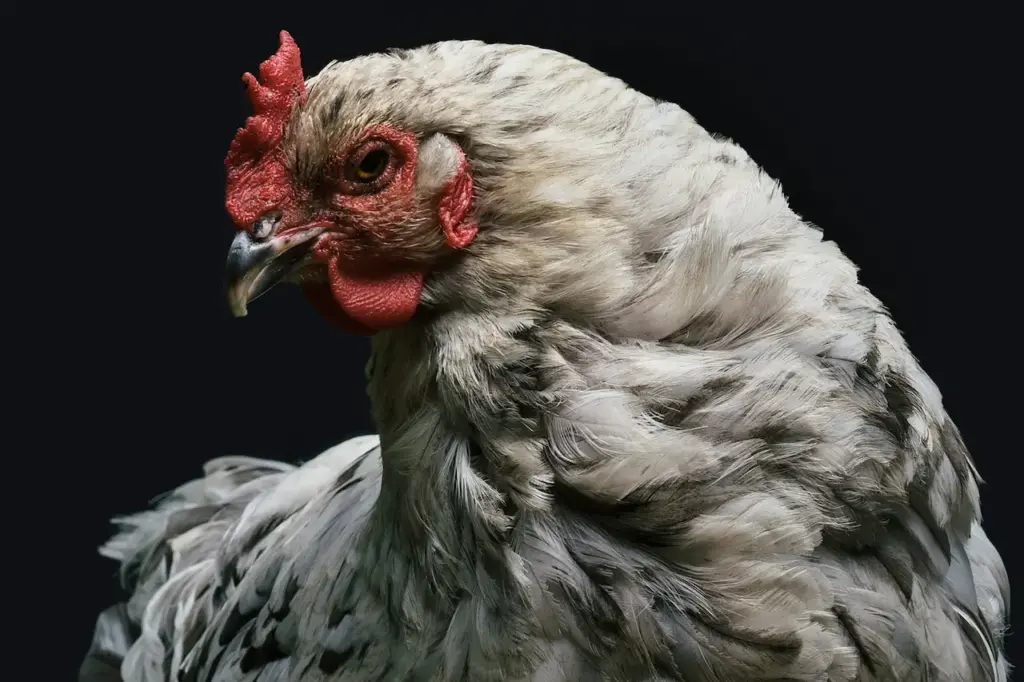Aspergillosis can be caused by a variety of species of fungi belonging to the genus . These fungi thrive in moist, warm organic matter such as soil, grains, straw and silage. Aspergillosis affects both mammals and birds. Birds are particularly susceptible.
Chronic aspergillosis occurs infrequently and is caused by birds being exposed to fewer spores for a longer period of time. As a result of progressive lung compromise, birds become debilitated.
[ez-toc]

Aspergillosis Diagnosis
Aspergillosis can be diagnosed by an exposure history and the presence of fungal plaques on the respiratory tract. The fungus can be confirmed in tissue sections using histopathology, culture and isolation.
Aspergillosis diagnosis can be challenging and requires the use of multiple tests. The clinical signs, physical exam findings and changes in routine blood tests may suggest a problem but they are not specific and do not suffice to make a diagnosis. A veterinarian may be able to determine the presence of aspergillosis based on a history of stress. The radiograph is the second most common test. It can show changes in the lungs or air sacs. Endoscopy is a technique that can be more effective in detecting fungus infection in birds. It allows you to see the airways directly.
All of these methods can be used to support the diagnosis of aspergillosis. However, the disease cannot definitively be diagnosed without identifying the organism. The best way to diagnose aspergillosis is currently to combine the above tests with a fungal cultures of the respiratory tract. A bird with a positive Aspergillus culture is more likely to show a large amount of fungal growth. The cultures are not very sensitive, and certain infections may not be detected. Your veterinarian can also examine secretions obtained from the airway during an endoscopy or flushed out of it to check for fungal organisms.
Recent tests have been developed to detect antibodies or Aspergillus in blood. These tests are more accurate at detecting Aspergillus, but because they are sensitive, many animals that test positive may not have the disease. These methods can also be used to test a large number of birds with the disease, but they are negative. These tests may be recommended by your avian vet to gather additional information, but are unlikely to give a definitive answer.
The best way to diagnose aspergillosis definitively is for a pathologist to examine affected tissue under a microscop. Under anesthesia, biopsies are taken, usually via endoscopy. They are then sent to a lab for analysis. This test can be used to confirm a diagnosis of Aspergillosis. However, it has its limitations. Anesthesia of a bird in a state of debilitation can be dangerous, and a biopsy could lead to hemorrhage. A biopsy may also miss the affected tissue. It is therefore not used as a first test. If your veterinarian recommends this procedure, it’s because he thinks it’s in the best interests of your bird. This procedure can also be used to treat the fungus directly within the air sacs using a powerful antifungal.
Can Aspergillosis be treated?
Aspergillosis can be treated and prevented by ensuring good hygiene, regular cage cleaning, nutritious and fresh food, and proper ventilation.
Aspergillosis can be a difficult disease to diagnose and treat. It is even harder to cure. The body’s attempt to block the fungus by creating a scar tissue prevents anti-fungal medications from reaching the organisms. The treatment can take from weeks to months, and may require hospitalization in the beginning. The bird’s immune system must be strong to completely eliminate the organism.
Antifungal medications can be administered orally, intravenously, topically, or aerosolized. It is possible to attempt the surgical removal of fungal plates (concentrated areas with fungal growth), but it can be dangerous unless done by an experienced avian veterinarian. Supportive care may include hospitalization, oxygen, warmth, force feeding, anti-inflammatory medication, and treatment for other diseases. Referral to an avian expert is often recommended.
It is important to remember that many birds have already been sick several weeks before they show any clinical signs.
Itraconazole, the most commonly used anti-fungal drug, is the first step in the fight against aspergillosis. This medication can be administered to birds by mouth. It is generally safe. Amphotericin B is another anti-fungal that has been used to treat aspergillosis when birds are hospitalized. However, it can cause kidney damage if used over a long period of time. This drug can also be used topically on an area with fungal growth, during endoscopic procedures. Many other anti-fungal drugs are used with variable success but less often. Certain drugs can be administered via aerosolization or nebulization to reach the airways and treat a fungal infection. In order to be effective, anti-fungal treatment may be required to continue for a minimum of 6 weeks or in some cases up to 6 months.
In severe cases, surgery may be required. Aspergillus may form granulomas, which are a mass of fungi and inflammatory cells that can develop in the airways or elsewhere on the body. A granuloma that forms in the trachea can block airflow. In this case, anesthesia may be required to remove the mass. Veterinarians often use an air-sac tube (a tube that leads into an air sac via the body wall) to allow the bird to breathe if an airway can’t be established. This is very similar to placing a tracheostomy in an emergency setting on humans and other mammals. The risks of anesthesia for a bird that has respiratory problems are real, but may be necessary when the bird is unable to breathe.
In addition to treating the disease, it is important that the bird remains stable. Supportive care is therefore an important component of treatment. If birds are not eating, they may require supplementary nutrition. Dehydration and hypothermia are also possible problems. It is important to keep in mind that the development of aspergillosis can be an indicator of a underlying illness or husbandry issue. To increase your bird’s chances of returning to health, you must address the cause of the immune suppression.

Prevention Of Aspergillosis
Aspergillosis among wild birds by reducing the amount of agricultural waste that is exposed to birds. This can be done by plow under or cover crop waste, or by using noise to deter birds from eating waste grain.
Aspergillosis is not spread from bird to bird or from birds to humans . Humans can become infected when they inhale spores from contaminated materials, or birds.
History Of Aspergillosis
Since the early 1800s, when a greater scraup was found to have the disease, it has been reported that wild birds can be affected by Aspergillosis. Aspergillus fumigatus is the main cause of aspergillosis among wild birds. However, it can also be brought on by A. Aspergillosis in wild birds is most commonly caused by A. fumigatus, but it can also be caused by A. flavus or A. niger. Aspergillus Flavus produces aflatoxins that can cause disease or death to some wildlife species if ingested.
Aspergillosis affects both mammals and birds. Birds are more susceptible. All bird species are susceptible to infection by Aspergillus Sp. In New York State the disease is seen most frequently in gulls and common loons. Raptors are also at risk. Wild birds and domestic birds can also be infected.
The disease is rarely a cause of outbreaks in wild animals and does not pose a serious threat. Nodules found in deer’s lungs may be mistaken as bovine tuberculosis.
Transmission Of Aspergillosis
Transmission of aspergillosis is caused by inhalation fungal spores. These are the main reproductive unit of fungi. The spores settle in the lungs of birds or in their air sacs where they germinate, grow hyphae and form plaques or nodules within the respiratory tract. The thickened walls in the lungs or air sacs can cause pneumonia and decreased respiratory function. Aspergillosis, although primarily a respiratory condition, can affect all organ systems if it spreads through the walls of the air sacs, the bloodstream or hollow bones that are connected to the air sacs.
Infected captive birds can be infected if they inhale spores from moldy bedding and feed.

Can Aspergillosis be transmitted to humans?
Aspergillosis does not cause contagious diseases and healthy people do not have to worry about getting infected. Aspergillus is in the air and may be inhaled at some point. However, they are rarely harmful. People with severe immune compromise may be an exception. To reduce exposure to aspergillus, keep your home clean to minimize the inhalation.
Clinical Signs Of Aspergillosis
Aspergillus inhabits the respiratory tract so frequently that it’s impossible to eliminate. There are vaccines, but they’re not very effective. It is best to limit exposure to spores, and keep your bird healthy. Your bird should be in a clean, dry environment. Don’t leave bedding or food moist in the cage as this is a breeding ground for fungi. Make sure that your bird is happy and healthy. Try to limit stress and maintain routine veterinary treatment for your bird to detect any issues that could predispose them to more serious diseases.
Clinical Signs are associated with respiratory compromise in infected poultry and include anorexia and diarrhea. Birds can die suddenly without showing any obvious symptoms, or become emaciated and debilitated in chronic infections. If the fungus is in the nervous system, birds may show neurological symptoms, including neck twisting and incoordination.
Aspergillosis develops slowly in the lungs (thin extensions to the avian lung). Early symptoms are usually subtle and include reduced energy, decreased appetite or lethargy. They may also be subtle signs of exercise intolerance, weight loss or progressive weight loss. This chronic form is often the result of long-term illness or stress and can go undetected for a considerable time. Respiratory signs such as an increased respiratory effort and rate, open-mouthed breaths and respiratory noises indicate a disease that is becoming more severe. These signs are usually not detected until the disease has progressed. Birds can experience respiratory distress, which can cause rapid deterioration and sudden death. Alert your veterinarian immediately if you notice these signs.
The disease is rarer and usually occurs in animals with compromised immune systems that have been exposed to large amounts of Aspergillusspores. This form may have any of the signs above, but it progresses more quickly, and can lead to death in a matter of days. Aspergillusinfection can also occur in the trachea, causing voice changes or a gurgling sound; or nasal cavity causing facial swelling and nasal discharge.
Aspergillosis, although a respiratory illness, can affect any organ in the body. It can travel through the bloodstream and grow through an air sac to the body cavity. There are many less common symptoms that can be observed. Other signs include neurological symptoms such as tremors and incoordination, or gastrointestinal signs like diarrhea and regurgitation. A wing droop can be caused by damage to the air sacs around the shoulder.
Domestic Poultry
Brooder pneumonia is the name given to acute aspergillosis in domestic chicken hatcheries or game farms. Young birds can get the disease if they inhale large amounts of spores either after hatching, or if they are housed in bedding that is contaminated.
Aspergillosis is more likely to occur in stressed and immunocompromised birds. Aspergillosis can be a major problem in centers that deal with wild seabirds following oil spills. Lead toxicosis can cause immunosuppression in birds that have aspergillosis.
Precaution and Prevention
Precautions should be taken by those at risk, such as wearing respirators when working with carcasses of birds suspected to be infected or in areas that are potentially contaminated. Infected meat cannot infect people, but they should dispose of infected carcasses in order to avoid inhaling the spores in air sacs.



